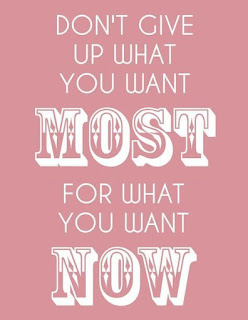I want to very clearly state that I am not a financial planner or expert. I share here what I’ve learned from my own experiences as I’ve redesigned my life after the unexpected and untimely death of my husband.
If, upon analyzing your checkbook a few weeks ago (Creating the Blueprint ((part 1 of 3)), you determined that your spending is aligned with the values by which you want to live your life and if you are comfortable with how and how much you spend — congratulations!
Grab a snack and a good book or turn on the tv and relax.
 But perhaps you’re more like me. When I first analyzed my spending, I discovered a very disturbing truth: my spending in no way reflected the values I purported to live by!
But perhaps you’re more like me. When I first analyzed my spending, I discovered a very disturbing truth: my spending in no way reflected the values I purported to live by!
Now, several years later, my income is about 1/2 of what it was then, but I live just as comfortably, if not more so, and — most importantly to me — I’m at peace about my finances because they are aligned with my values.
Here are a few tips that I hope can help you get to the same place financially.
You may already be doing some of these things. Some of these things might fit your style or your needs. Some may not make sense to you. No problem. Pick and choose what you feel is right for you.
1. This is for me non-negotiable. Always — from planning and budgeting to spending $1 for a super-saver soda at the gas station — approach finances from the standard that governs your spiritual life. For me, that means Biblical principles guide my budgeting and spending. That doesn’t mean I don’t have fun. I do. But I do so without guilt because I have made allowances for that.
2. Long story short, my husband and I were already in the process of getting out of debt but didn’t feel comfortable “going it alone”. After a tremendous amount of research on personal finance, we determined that Dave Ramsey’s approach was most closely aligned with our own values and style, so about 6 months before my husband’s diagnosis, we read The Total Money Makeover and began following his “Baby Steps” for taking control of our finances. That fell by the wayside with my husband’s diagnosis and passing. But when I learned through an analysis of my spending that I needed to make changes, I returned to Dave’s guidelines. I’ve made mistakes, and I’m not totally debt-free (I have a mortgage), but following his program was absolutely essential in my gaining control of “my” money and allocating it it more intentionally and appropriately.
While I whole-heartedly recommend Dave Ramsey’s books and program, it may not be a good fit for you. If that’s the case, do diligent research (online, in your public library, in the bookstore or on amazon) to learn about personal finance experts so you can find a philosophy and strategy that is right for you.
3. If you are in debt, make eliminating it a priority. My husband and I, and later I on my own, followed the “debt snowball” approach to debt. You can find information about it on Ramsey’s site, but you can find the exact same idea many other places. Banks, financial planners, etc., routinely recommend its use, and many banks and lenders provide an interactive tool on their sites.
4. Develop a spending plan (aka “budget”). Do not, however, begin by listing your bills. Instead, do the following, in order:
a. List your values/priorities, in order; add “miscellaneous” at the bottom. This will be explained in #6.
b. List your bills or monthly expenditures beneath the value/priority it reflects; if an expenditure
doesn’t fit a specific value, place it under “miscellaneous”.
Example: — one of my values is personal safety/health. I placed my house payment fits under this
value because I choose to live in a home because of the personal physical safety it provides
c. Somehow (put a star, hi-lite, etc) the “essentials” — rent/mortgage, food, etc.
d. Consider every single expenditure, even the essentials, very carefully. What are you willing to
tweak, or even eliminate, in order to realign your spending?
Examples: Yes, a house/apartment is a need. But do you need a five-bedroom, 4-bath home? Or
can you and your family live just as safely — and at less cost — in a 3-bedroom, 3-bath home?
Yes, food is essential to life. But how often do you eat out? What’s on your grocery list? Do you
need soda and name-brand labels, or will water and store-label items provide you the same, maybe
even healthier, diet?
5. Make a list of changes that you want to implement and then do so in the order and at a pace at which you feel you can sustain. I’m an “all-in” type of person, so when I did this, I made an entirely new spending plan, plugged it into Dave Ramsey’s “EveryDollar” app (on my phone) and followed it. I’ve tweaked it slightly as circumstances have changed — job change, debt paid off, retirement, etc — but the overall plan has remained consistent.
Dave Ramsey encourages people to use cash and envelopes. I tried this more than once and for several months each time. I did not like it; I have friends who love using it. Instead, I use a debit card and the EveryDollar app, and I enter every single expenditure, no matter how small.
6. Do not expect that your percentages are going to line up mathematically with your priorities/values. In other words, if you have 5 priorities, do not expect that priority #1 will receive 40% of your funds, priority #2 will receive 30%, and so on. Dave Ramsey explains this far better than I can, and other financial gurus have their own explanation, but I’ll just say that housing — mortgage, utilities, house insurance, property taxes, etc. — is not my #1 priority; it is, however, my largest budget item. The point of listing your values first and then placing your expenditures under them is so that you can see if, as best you can and as you hopefully free up some money by making changes, you can allocate what discretionary funds you do have so that your spending is aligned with your values.
What do I mean? Okay, let’s say you’ve decided that you can borrow books from the library rather than buy so many new novels every month, and by doing so you’re going to save $100 a month. If you do not have a plan, if you do not know beforehand where you want your money to go, it will “disappear” without you even thinking about it. But if you consider that your priority #1 is your spiritual life, you can consider how you could allocate at least a large chunk of that newly-freed $100 toward that. Perhaps your church youth group is going on a mission trip and needs adult volunteers or maybe you want to spend a weekend at a spiritual retreat in a nearby city. Let’s say that your #2 priority is becoming self-employed. Put another chunk of that newly-freed $100 toward a class you need to take or a piece of equipment you need to launch your new business.
I realize that my strategy may seem pretty vague and that it may not fit you. But I hope that reading this post has caused you to consider what you can do to more closely align your finances to your own values.
It will take time, commitment, perseverance. It won’t always be fun. But it will be rewarding!
It’s your turn now. What budgeting tips can you share? What challenges do you face? Please share via a comment.
